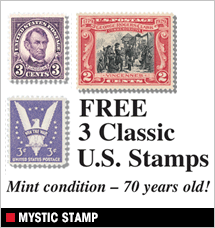
I didn’t go to Woodstock in 1969. In August of that year, although I had recently traded my plaid skirt for bell-bottoms and my charm bracelet for a leather-strung peace sign, I was still a 14-year-old girl whose parents had three words to say about “that hippie festival” in upstate New York. No, no, and no! Max Yasgur’s farm, the actual location of the event, was a three-hour ride from my home in central New Jersey, but it might just as well have been on the moon. I wasn’t going. Period.
It has taken me 43 years, but last summer I finally made it to Bethel, New York, site of the Woodstock Music Festival. My husband, Mitch, and I, in celebration of our 30th anniversary, jumped into our air-conditioned SUV (not quite a hippie van) with our friends, Nancy and Glen, and headed up north and back in time. As Nancy and I could have predicted, we got a little lost because just like the men of 1969, our husbands refused to ask for directions. Don’t worry. It’s up here somewhere. We’ll find it.
But thankfully, in 2012, with smart phones and a GPS, getting lost was no longer a big deal. Driving past fields, farms, and tiny general stores as well as shopping malls and a multiplex theater, we sang the words to Joni Mitchell’s “Woodstock.” And we’ve got to get ourselves back to the garden…
But since we were no longer our teenaged selves of the ‘60s, we checked into a nearby hotel complete with swimming pool and comfortable beds piled with extra pillows. There was even a garden.
The next day, along with several other mature adults, we hopped onto a shuttle bus bound for the arts center that had been built in Bethel. The large-windowed wood and stone structure that was the Museum at Bethel Woods looked as if it had been crafted from the trees and rocks surrounding it.
Once inside, we stepped onto a rug splashed with peace signs and daisies and followed a curving wall marked with a timeline of events. The Soviet launch of the first man in space, Martin Luther King’s “I Have a Dream” speech, and the Beatles’ arrival in America. They were all listed on the wall, leading us back in time as we wandered through a decade. A collection of photos, movies, interviews, and artifacts told us another story, the story of Woodstock in August 1969.
The festival was named for Woodstock Ventures, an investment company intended to provide funding for a recording studio in Woodstock, New York. The original site of the multi-artist concert was Wallkill, New York, but a dispute over facilities for the expected crowd caused the local zoning board to cancel the event. Max Yasgur invited the promoters to hold the festival on his 600-acre dairy farm in Bethel, and history was made as almost half a million people flocked to a small town in upstate New York for “three days of peace and music.”
The scene was chaotic, and life in Bethel was turned upside down. But as large numbers of concertgoers abandoned their cars on the New York State Thruway, where traffic had come to a standstill, and trudged through the rain toward Yasgur’s place, many of the confused and shocked people of Bethel offered them food and blankets.
As my husband, our friends, and I, now 50-something suburbanites, wandered through the exhibits, we remembered. The late 1960s had been a time of hope, optimism, and a belief in the power of the individual to bring about change. It had been a time when peace had seemed like a possibility. But it had also been a time when words like assassination, Chappaquiddick, Vietnam, and Charles Manson demanded our attention. It had been our time, the time of our youth.
As we left the museum, talking about its psychedelic hippie bus, the way Jimi Hendrix could play guitar with his teeth, and how much we had loved our old vinyl albums, we headed toward the concert pavilion. The amphitheater was professionally landscaped and covered with a sturdy roof designed to protect the audience in the event of rain. Turning off our cell phones and donning our prescription glasses, we slid into our comfortably contoured seats. Then, just as he had 43 years ago, Joe Cocker strode onto the stage. Sporting a few more pounds and a little less hair, but with the same deliciously raspy voice, he began to sing.
And for the rest of the evening, “with a little help from my friends,” I felt as if I’d truly gotten myself back to the garden.



























































